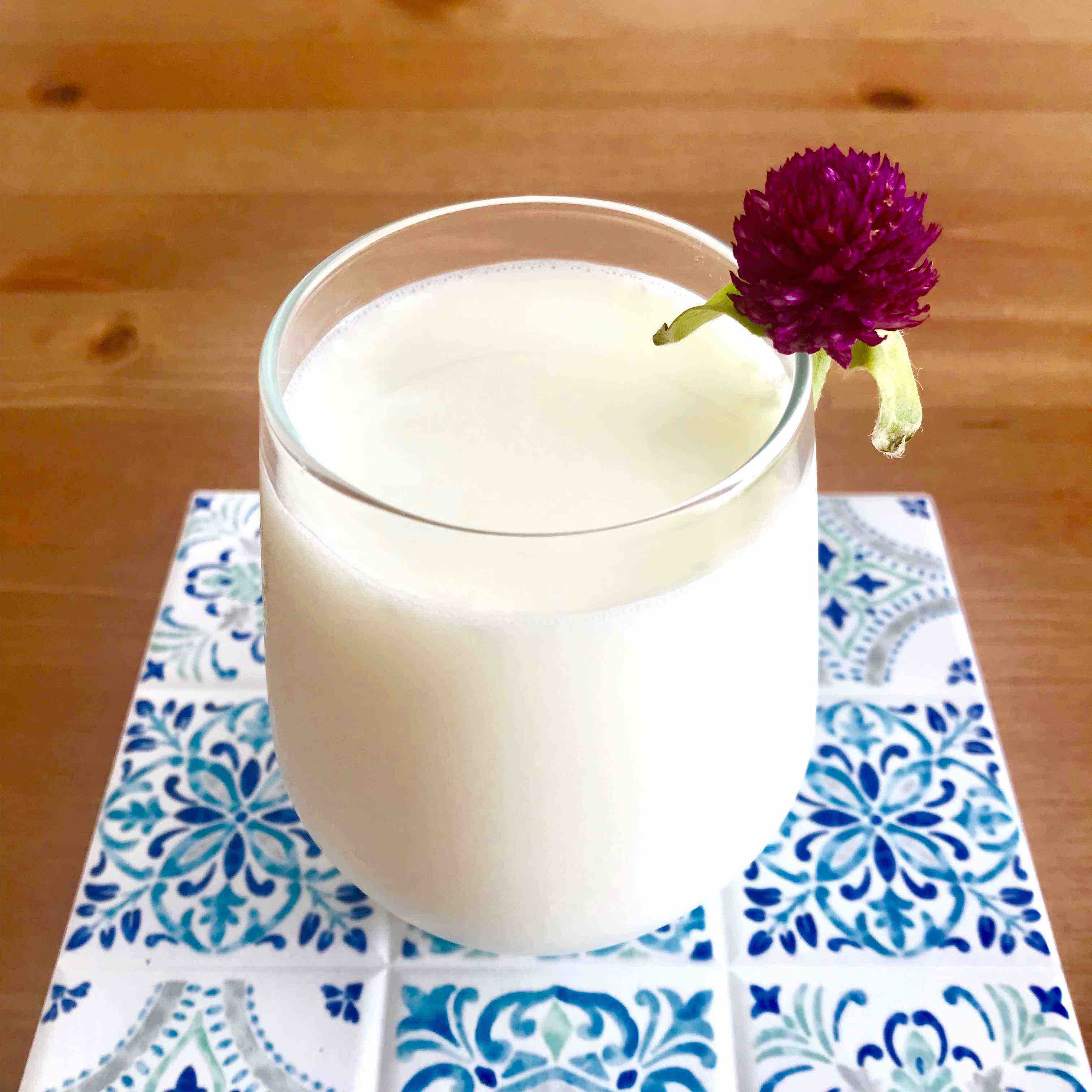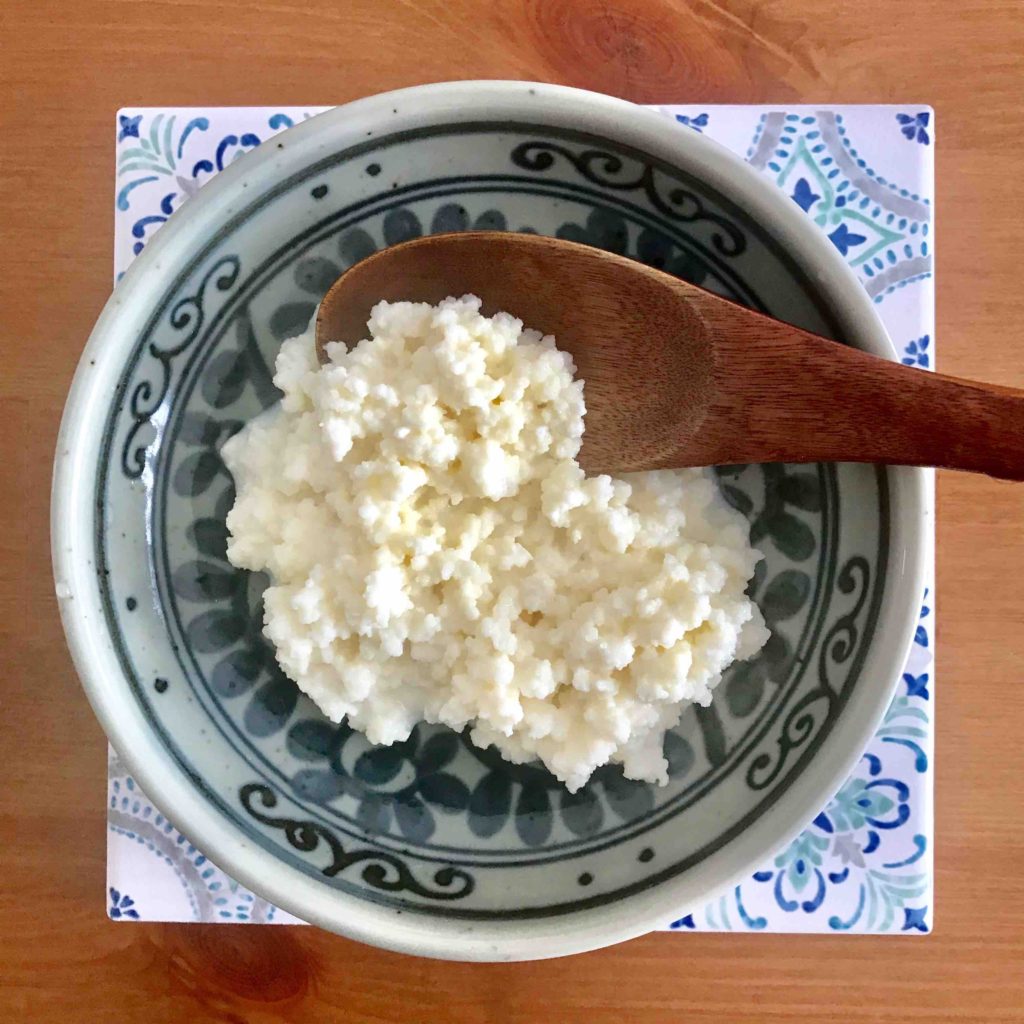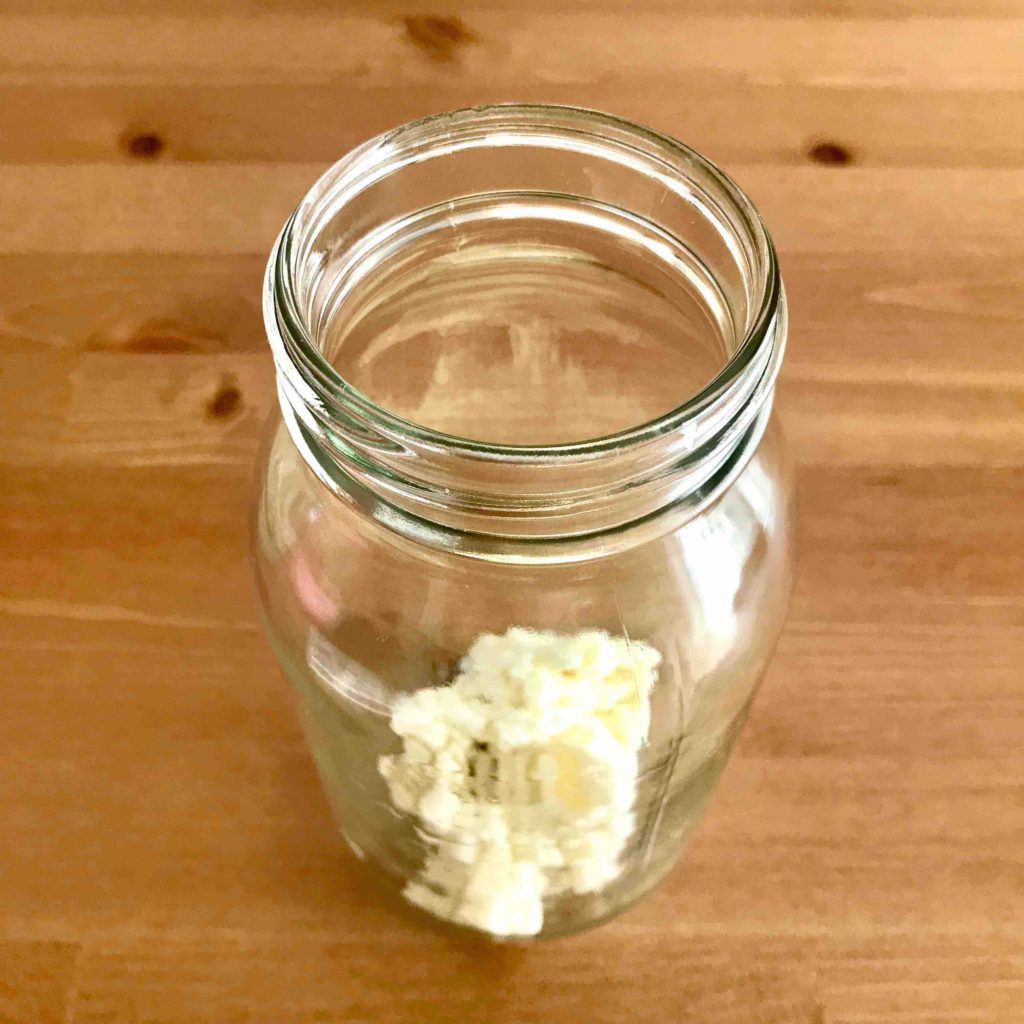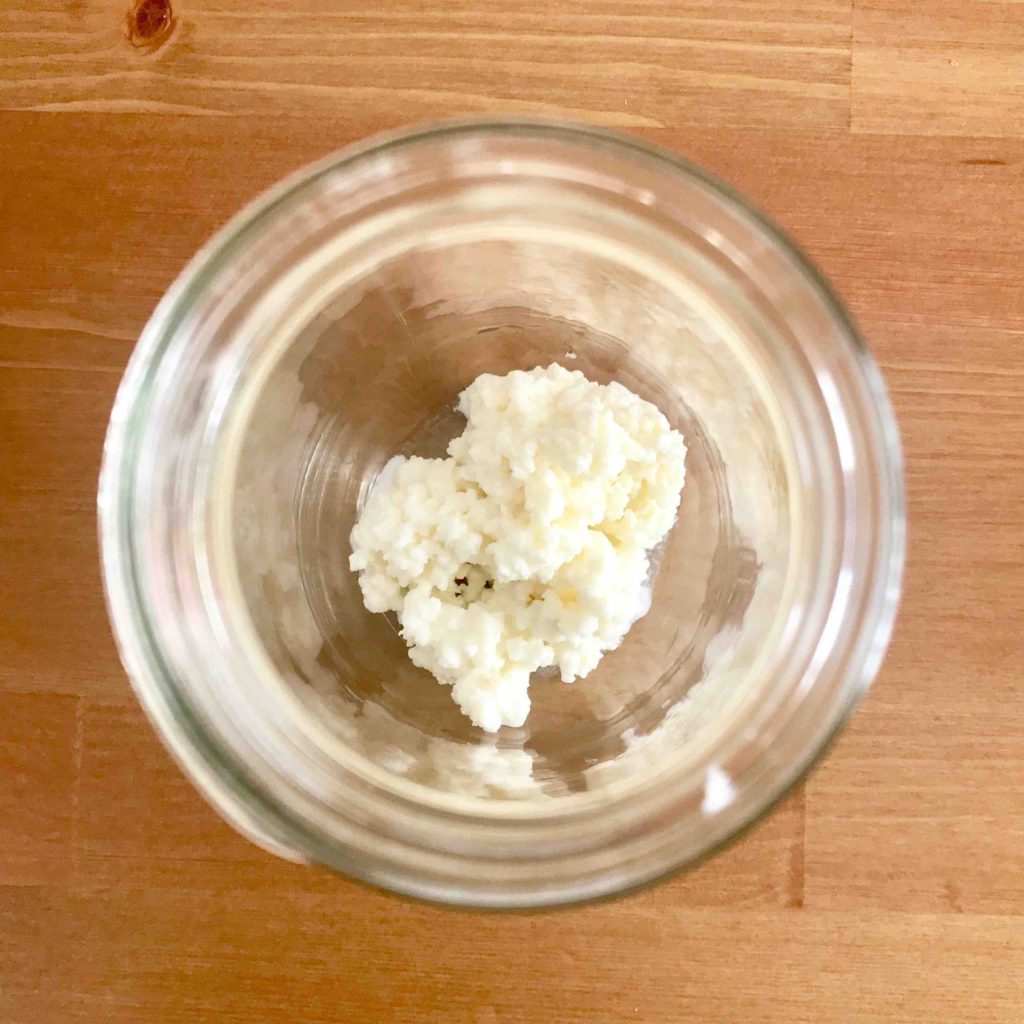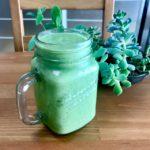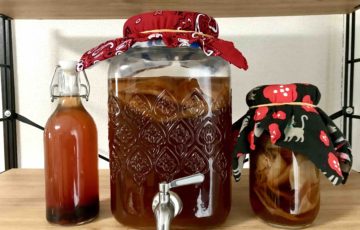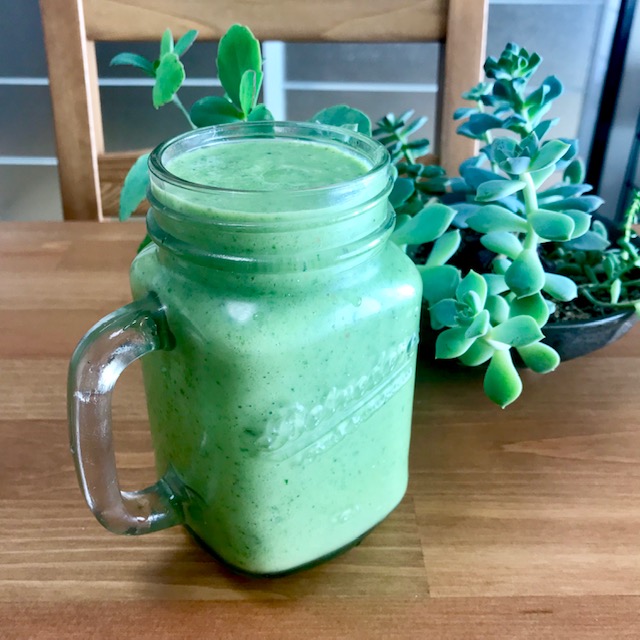I remember my parents used to make milk kefir when I was a kid, but something happened that we stopped making it for a long time.
Last year, I got a really bad IBS due to an antibiotic treatment that messed up my gut flora and left me pretty debilitated. I was so desperate and so determined at the same time to find a cure, that I spent many hours searching on the internet and reading articles about how to heal the gut. Then, I remembered my childhood and turns out, people are going crazy about fermented foods again.
I will tell you about my gut healing journey in another post, but let me tell you one thing now. I am confident to say that milk kefir was the one responsible to quickly heal my IBS.
Table of Contents
What is Milk Kefir?
In order to make milk kefir, you need a colony of microorganisms called kefir grains, which look like cauliflower florets and have a gelatinous touch. Kefir grains contain a community of 30 different microorganisms such as “Lactobacilli”, “Leuconostoc”, “Acetobacter” and “Saccharomyces” some of which are often found in fermented foods.
Also, according to Wikipedia (and for what I have read in other sources),
The drink originated in the North Caucasus, Eastern Europe and Russia,where it is prepared by inoculating cow, goat, or sheep milk with kefir grains.
Wikipedia contributors, “Kefir,” Wikipedia, The Free Encyclopedia, https://en.wikipedia.org/w/index.php?title=Kefir&oldid=926058422 (accessed November 16, 2019).
Why using kefir grains if you can use starters?
Sandor Ellix Katz, author of “The Art of Fermentation”, says that kefir grains cannot be reproduced from pure or mixed culture microorganisms present in the grains. These evolved and self-multiply through spontaneous symbiosis, and cannot be artificially created by mixing chemicals and microorganisms in the lab.
Thus, most of the commercially produced kefir milk products appear to use only a portion of the microorganisms known to be contained in kefir grains. There are other commercial reasons, but it seems to be quite difficult to recreate artificially this unique form of the symbiotic colony.
Some benefits
According to what I have picked up from different sources, milk kefir can have the below benefits:
- Great source of probiotics (as said above, 30 types of microbes. Much more than Yogurt!)
- Supports digestion and the health of the digestive tract.
- It is antimicrobial and anti-inflammatory.
- It has the potential to be anti-carcinogenic (prevent or delay the development of cancer)
- Stimulate the immune system.
- A good source of calcium, potassium and protein also for those with Lactose Intolerance (the fermentation process significantly reduces the concentration of lactose in milk, because these bacteria help digest it).
How to make it
Ingredients
- Kefir grains: 1tbsp (a heaping spoonful)
- Milk: 1L
- A glass jar with a lid: 1L
- A plastic strainer
Steps
- Wash and sterilize (if new) the glass jar.
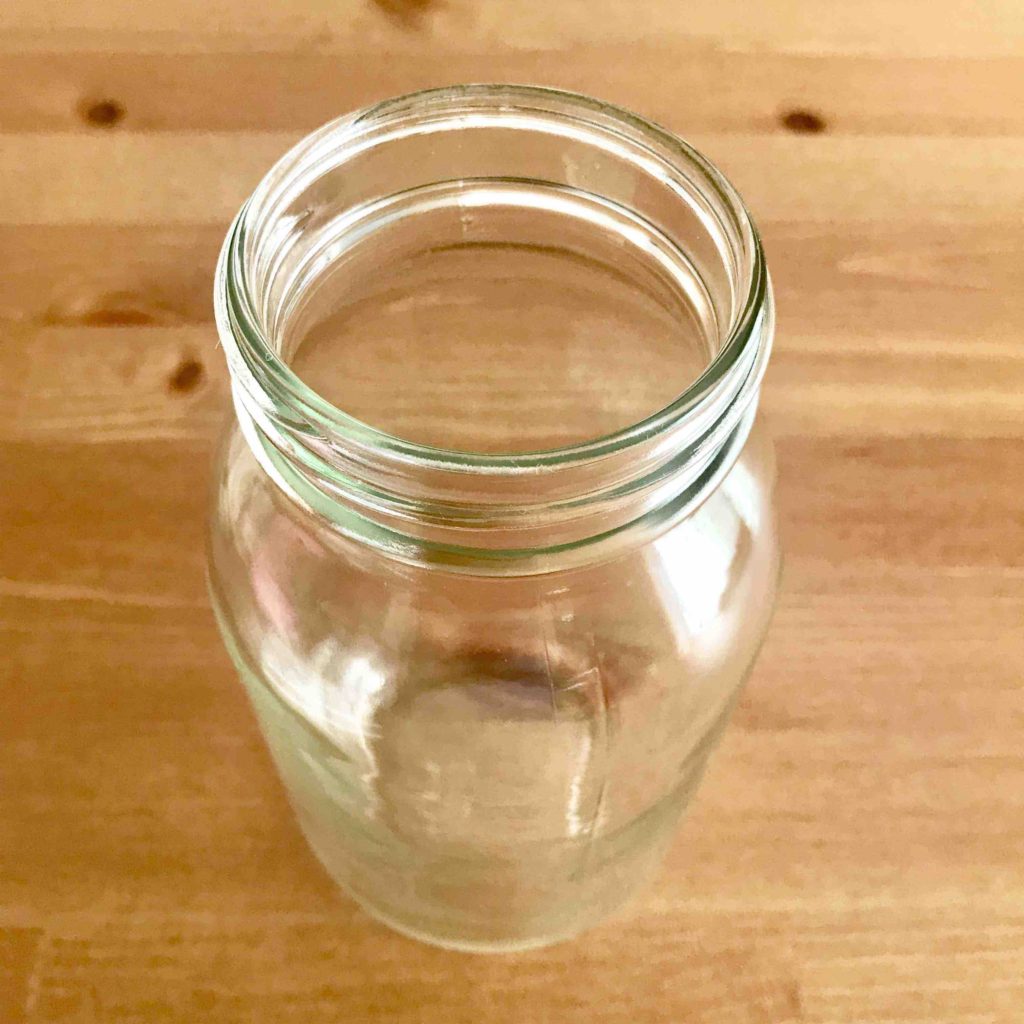
2. Add the Kefir grains in the jar.
3. Add the milk in the jar.
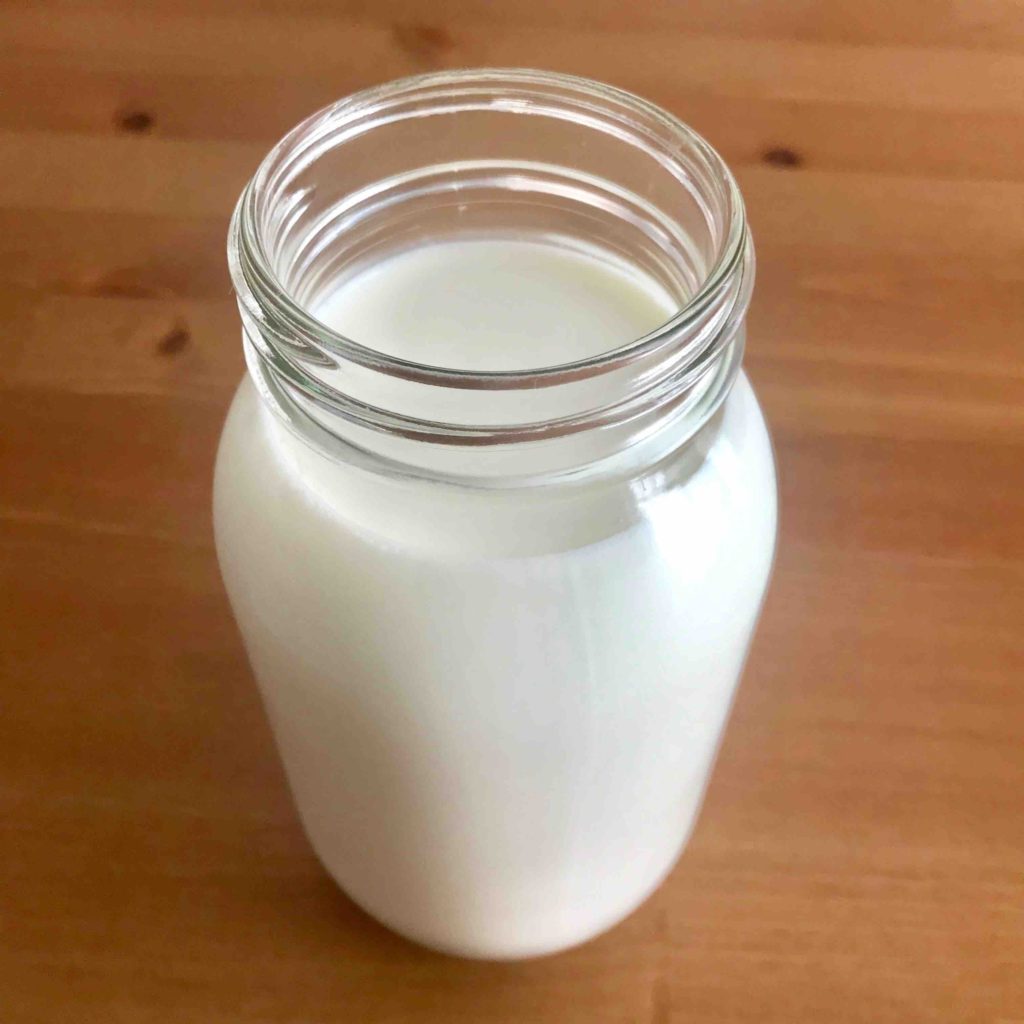
4. Put a lid on the jar loosely, and let it sit at room temperature for approximately 24 hours.
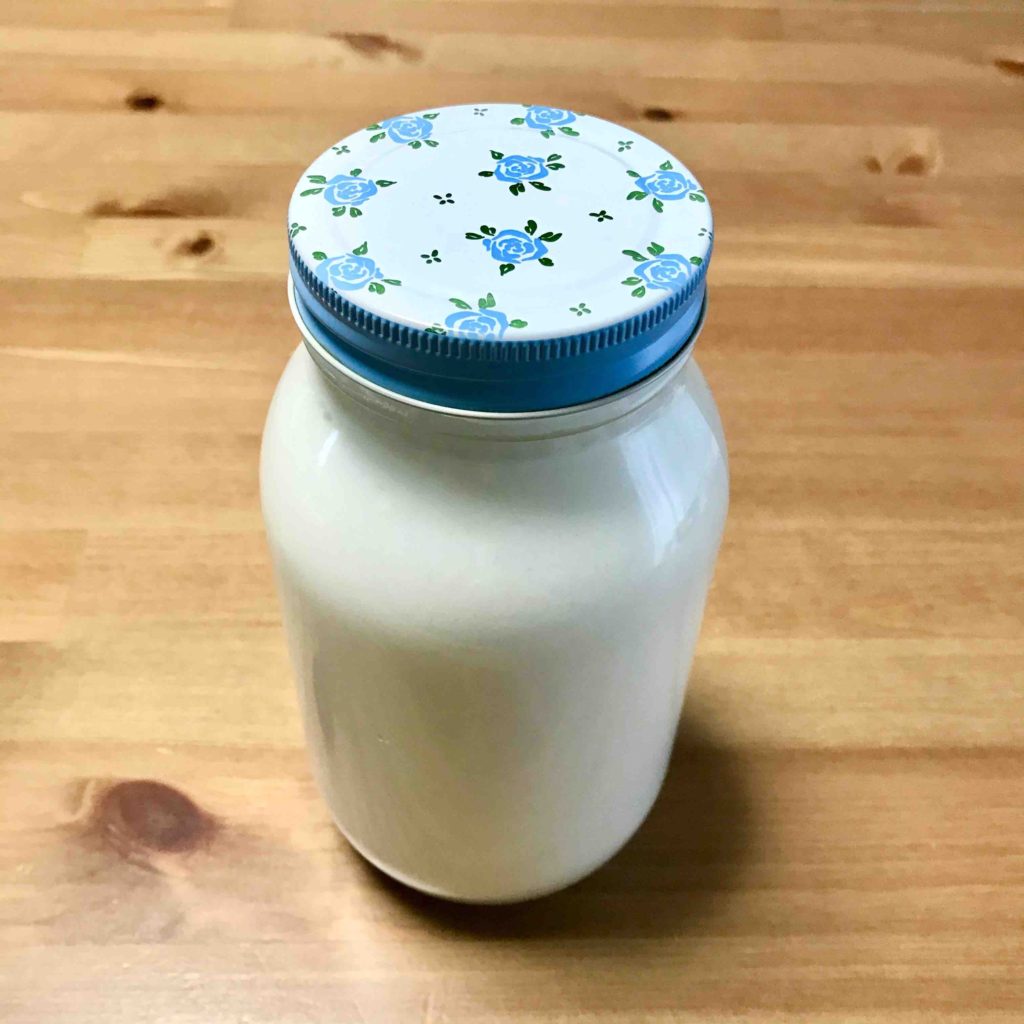
5. After 24 hours, strain the milk with the Kefir grains in a plastic strainer.
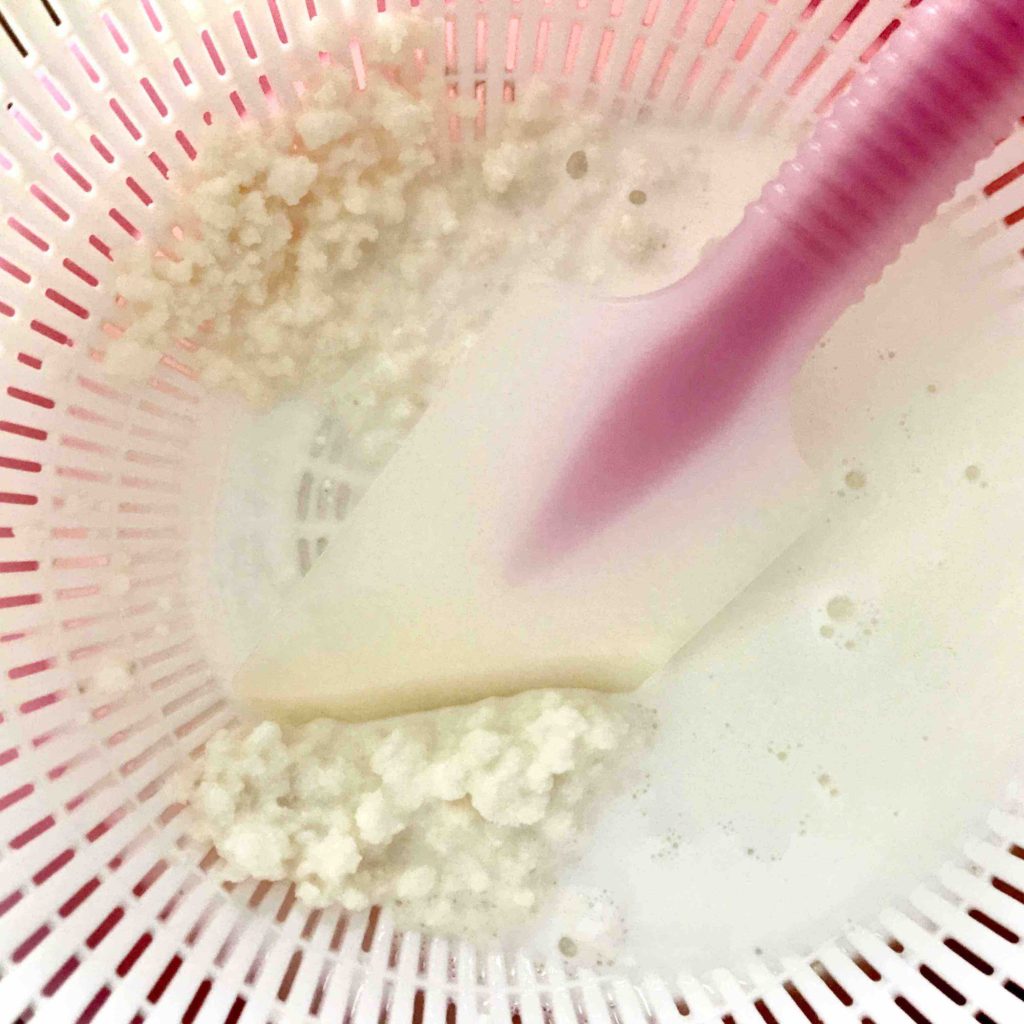
6. Ready! Now, you can have the kefir milk however you want.
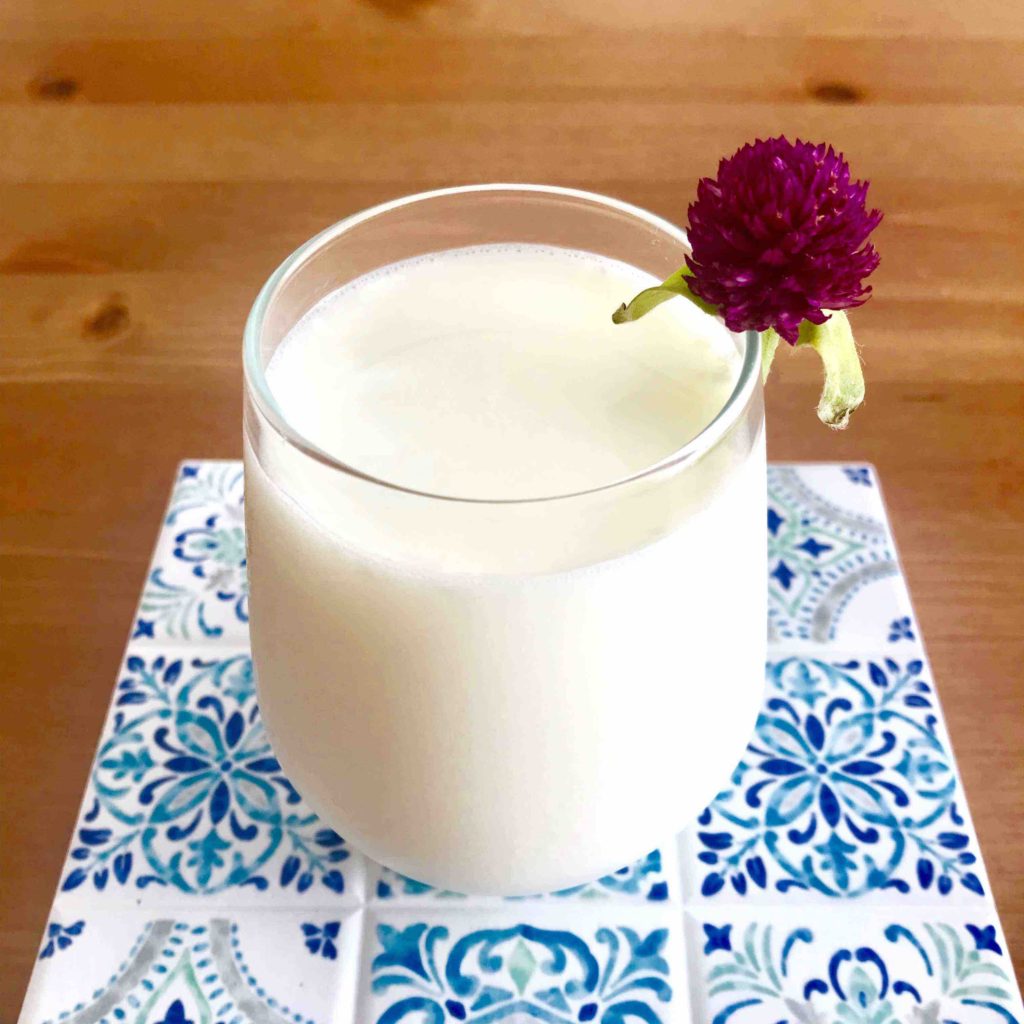
7. Repeat the same process (wash the jar, add the kefir grains, add milk and wait 24 hours).
Final note
- Fermentation time will depend on the room temperature.
- If the temperature is warm enough, Kefir grains can double from one week to 10 days, so feeding the grains with fresh milk as soon as it gets fermented is recommended. Otherwise, the milk gets too acidic, and the grains can die.
- In order to prevent premature fermentation, the ratio of the grains to milk should be about 10% or less.
- Kefir grains do not like metal. It is recommended to use plastic or glass.
- Do not rinse the kefir grains in water. Use fresh milk or the same fermented milk.
- If it ferments too much, it will separate the whey. This is totally normal. You can shake the jar and mix the whole thing again, or you can separate the whey and use it in something else. You will notice, the milk is thicker and it will have a yogurt consistency.
- If you want to rest a little bit from making it, just add milk and put it in the refrigerator. In that case, you can close the lid, but have in mind this is still fermenting, so open the lid once a week or so to avoid explosion, and DO NOT forget to feed the grains.
- Eating grains by mistake will not cause any health problems. Some people say it is even more beneficial.
Enjoy your Kefir! If you do not know people who can give you the bacteria, there are many options to get it. There are communities in social media, online stores, your local farmers market or who knows?! your neighbor might have some for you! I got mine on the Rakuten Store here in Japan. If you live in Japan, here is your option:
Click on the link below:
生ケフィア ケフィア粒 ケフィア ケフィア菌 生きた乳酸菌 乳酸菌 ヨーグルトキノコ ケフィアドリンクつき
Price: 1,944 Yen(Tax incl+Shipping) (as of 2019/10/5) 楽天で購入
Have a good day everyone! ☀️
